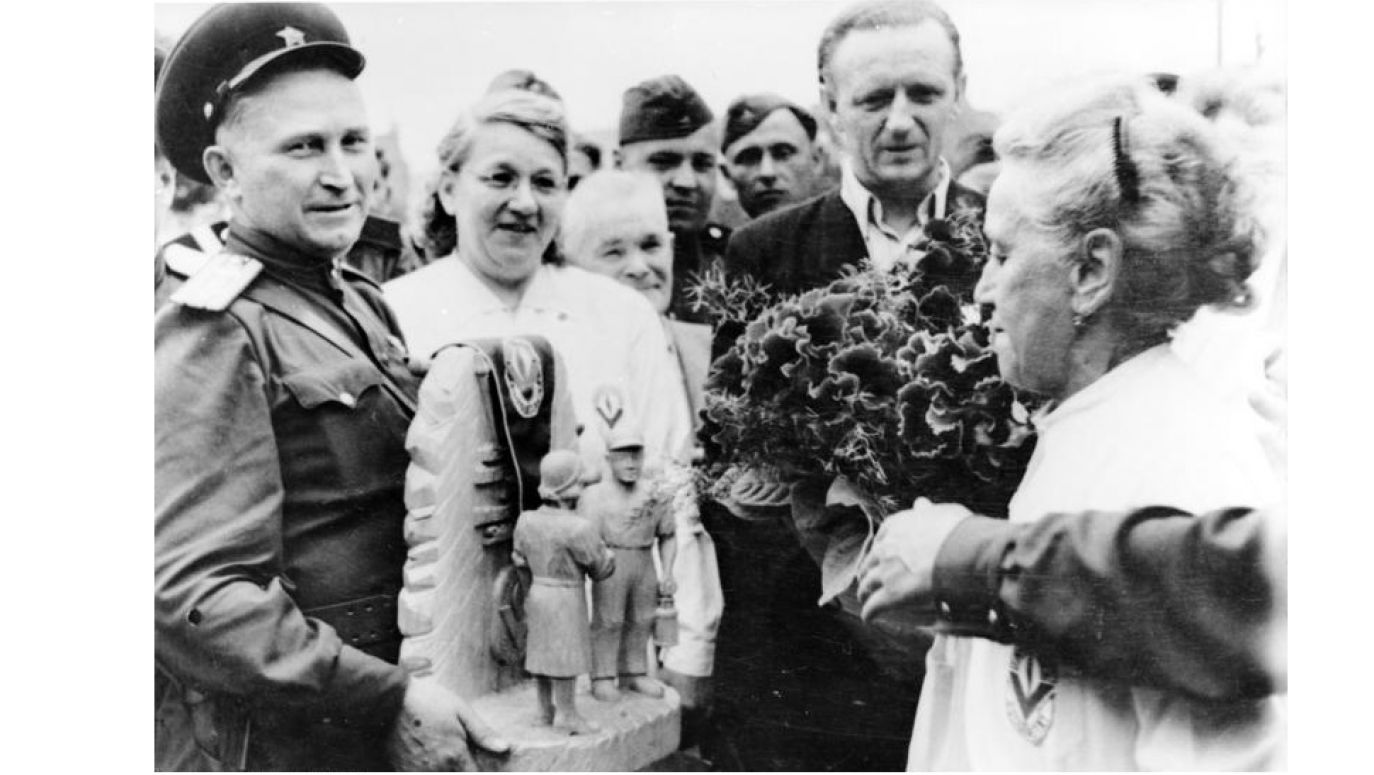Hitler's rule brought National Socialism to Germany, and after him and the war he unleashed came Soviet socialism. At least in the zone of occupation that fell to the USSR and which later became the German Democratic Republic. The introduction of the new system went extraordinarily smoothly. The public, stupefied by Nazi ideology, was receptive to another, supported, of course, by the Soviet occupation. Even the communist youth organisation Freie Deutsche Jugend was a simple adaptation of the structures and mechanisms of the Hitler Youth. Only the brown uniforms were exchanged for blue ones.
What is truly extraordinary about East Germany is how quickly a completely new political, cultural and ideological system was created after the end of the World War II. While the fires of war still burned in Berlin, they reset the clock to Soviet times. They brought painters, poets, and musicians from Moscow, and soon they had a whole new educational system, new teachers who taught them how to be an exemplary socialist citizen.
 SIGN UP TO OUR PAGE
SIGN UP TO OUR PAGE

As in other countries dependent on the USSR, it was necessary to first bring native communists to power. One of them was Walter Ulbricht, a pre-war NKVD agent and terrorist who proved himself as a Red Army officer during the war and was responsible for German-language propaganda to soldiers in the Wehrmacht and later to compatriots in prisoner-of-war camps. This carpenter's apprentice from Leipzig had already been working since the spring of 1945 on the founding of the SED (Socialist Unity Party of Germany. Socialist Unity Party of Germany), in accordance with his own maxim: "Everything should look democratic, but it is we who hold the power in our hands." The new authorities in the East introduced communism with a zeal that exceeded the Soviets' expectations.
The "liberators," on the other hand, were primarily concerned with looting everything that could be loaded onto trains and carting the booty eastward. Even before they handed over parts of Berlin to the Americans and British, the Soviets had stripped the city of everything of value. They even established the Soviet Joint Stock Company, which managed the remaining assets to cover the Soviet Union's claims to German war reparations.
But that was not the worst of it. At that time, the economy of East Germany was being strangled by the delusions of Ulbricht and his people, who nationalised everything in sight: they took everything away from farmers and even the smallest stores from their owners, and created a network of HO trading posts with ration cards. The Communists' idea was to switch production to heavy industry, even though these particular German areas were not as heavily industrialised as the West.
As a result, food became scarce and the authorities further tightened working conditions. Stalin also refused to adopt the plan of the American Secretary of State, George C. Marshall, so all the aid earmarked for Germany was used up by West Germany. In the East, they had to make do with the alternative, the Molotov Plan, which contradicted the principles of economics and the free market economy.
- The two parts of Germany began to "diverge" even before the war ended, Prof. Felix Roesel, a German economist at the University of Braunschweig, told TVP Weekly. - Many companies, such as Siemens and Audi, moved production from the East to the West, and masses of people also fled the Red Army. After the occupation of Germany, the Russians exported entire production lines and even railroad lines to the East. Later, the Americans financed the Marshall Plan, which enabled everyone to find good jobs after the war. This was also the reason for the migration of the brightest and best educated minds from the East to the West.

 SIGN UP TO OUR PAGE
SIGN UP TO OUR PAGE
 As in other countries dependent on the USSR, it was necessary to first bring native communists to power. One of them was Walter Ulbricht, a pre-war NKVD agent and terrorist who proved himself as a Red Army officer during the war and was responsible for German-language propaganda to soldiers in the Wehrmacht and later to compatriots in prisoner-of-war camps. This carpenter's apprentice from Leipzig had already been working since the spring of 1945 on the founding of the SED (Socialist Unity Party of Germany. Socialist Unity Party of Germany), in accordance with his own maxim: "Everything should look democratic, but it is we who hold the power in our hands." The new authorities in the East introduced communism with a zeal that exceeded the Soviets' expectations.
As in other countries dependent on the USSR, it was necessary to first bring native communists to power. One of them was Walter Ulbricht, a pre-war NKVD agent and terrorist who proved himself as a Red Army officer during the war and was responsible for German-language propaganda to soldiers in the Wehrmacht and later to compatriots in prisoner-of-war camps. This carpenter's apprentice from Leipzig had already been working since the spring of 1945 on the founding of the SED (Socialist Unity Party of Germany. Socialist Unity Party of Germany), in accordance with his own maxim: "Everything should look democratic, but it is we who hold the power in our hands." The new authorities in the East introduced communism with a zeal that exceeded the Soviets' expectations.





